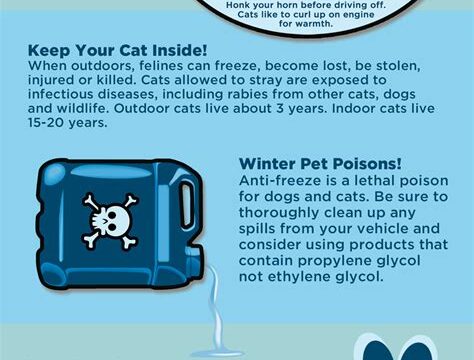Choosing the right winter dog gear
Choosing the right winter dog gear is essential to keeping your furry friend warm and comfortable during the cold months. Whether you have a small, medium, or large dog, it’s important to invest in proper winter gear to protect them from the harsh elements. From jackets and boots to sweaters and hats, there are a variety of options available for different breeds and sizes.
One of the key pieces of winter gear for dogs is a well-fitting coat or jacket. Look for coats made from waterproof and windproof materials to provide maximum protection against rain, snow, and cold winds. Make sure to measure your dog’s chest, neck, and back length to ensure the coat fits properly. Additionally, consider jackets with reflective strips or bright colors to enhance visibility during dark winter evenings.
Dog boots are another essential accessory for the winter season. They not only protect your dog’s paws from cold surfaces but also prevent their feet from coming into contact with ice, salt, and other harsh chemicals used to melt snow. Look for boots with non-slip soles and adjustable straps to ensure a secure fit. Remember to gradually introduce your dog to wearing boots and let them get used to walking in them before venturing outside.
In addition to coats and boots, sweaters and hats can provide extra warmth for dogs with short fur or those that are more susceptible to the cold. Opt for sweaters made from comfortable and breathable materials that allow freedom of movement. Hats can help protect your dog’s ears and head from cold temperatures and wind chill. However, it’s important to ensure that hats fit properly and do not obstruct your dog’s vision or hearing.
- Coats or jackets: Provide waterproof and windproof protection.
- Dog boots: Protect paws from cold surfaces and harsh chemicals.
- Sweaters: Extra warmth for dogs with short fur.
- Hats: Protect ears and head from cold temperatures and wind chill.
| Gear | Key Features |
|---|---|
| Coats or jackets | Waterproof, windproof, reflective strips or bright colors |
| Dog boots | Non-slip soles, adjustable straps |
| Sweaters | Comfortable, breathable materials |
| Hats | Proper fit, doesn’t obstruct vision or hearing |
Investing in the right winter gear for your dog is crucial for their well-being and comfort during the colder months. It will not only protect them from harsh weather conditions but also prevent potential health issues such as hypothermia and frostbite. Remember to consider your dog’s size, breed, and individual needs when choosing the appropriate gear. By keeping your four-legged friend warm and cozy, you can both enjoy the winter season to the fullest!
Keeping your dog warm indoors
Keeping your dog warm indoors is essential during the winter months. Just like humans, dogs can get cold and uncomfortable in the chilly weather. Providing them with a cozy and warm environment is important for their overall well-being. Here are some tips to help you keep your dog warm and comfortable inside your home.
Firstly, it’s important to create a designated area for your dog to relax in. This can be a cozy corner with a comfortable dog bed or a warm blanket. Make sure the area is away from any drafts or cold spots in the house. You can also consider using a heated pet bed or a heat lamp to provide extra warmth for your furry friend.
Secondly, dressing your dog in appropriate winter gear can help keep them warm indoors. Consider investing in a dog sweater or jacket made from warm and insulating materials. This can help retain your dog’s body heat and keep them snug and cozy. Just make sure the clothing is not too tight or restrictive, allowing your dog to move comfortably.
Lastly, pay attention to the heating in your home. Keep the temperature at a comfortable level for your dog, ideally between 68-72°F. Avoid placing your dog’s bed near radiators or heating vents as this can cause overheating. If you have a fireplace, make sure your dog stays at a safe distance to prevent burns or accidents.
- Ensure a designated cozy area for your dog to relax in.
- Consider using a heated pet bed or a heat lamp for extra warmth.
- Dress your dog in appropriate winter gear, such as sweaters or jackets.
- Keep the temperature in your home comfortable for your dog.
- Avoid placing your dog’s bed near heating sources.
- Take precautions if you have a fireplace to prevent accidents.
| Tips for Keeping Your Dog Warm Indoors: |
|---|
| Ensure a designated cozy area for your dog to relax in. |
| Consider using a heated pet bed or a heat lamp for extra warmth. |
| Dress your dog in appropriate winter gear, such as sweaters or jackets. |
| Keep the temperature in your home comfortable for your dog. |
| Avoid placing your dog’s bed near heating sources. |
| Take precautions if you have a fireplace to prevent accidents. |
By following these tips, you can ensure that your beloved dog stays warm and comfortable indoors during the winter season. Remember, a cozy and warm environment is essential for their well-being and happiness. So, take the necessary steps to create a comfortable space for your furry friend and enjoy the winter months together!
Protecting your dog’s paws from cold and ice
Dogs are susceptible to the effects of cold weather, just like humans. One area of their body that can be particularly vulnerable is their paws. When it comes to protecting your dog’s paws from the cold and ice, there are a few key steps you can take to ensure their comfort and safety.
1. Keep the hair between their toes trimmed: During winter, dogs can collect snow, ice, salt, and other debris in the fur between their toes. This can lead to discomfort and even frostbite. By keeping this fur trimmed, you can help prevent such issues and make it easier to clean their paws after walks.
2. Use dog-friendly footwear: Dog boots or paw protectors can provide an extra layer of insulation and shield your dog’s paws from cold surfaces and ice melt. Make sure the footwear fits properly and is designed with non-slip soles to prevent any accidents.
3. Apply paw balm or petroleum jelly: Just like our skin, a dog’s paws can become dry and cracked during winter. Applying a paw balm or petroleum jelly before heading outdoors can help moisturize their paws and create a protective barrier against the cold and ice.
By taking these preventive measures, you can ensure your furry friend’s paws stay healthy and protected during the winter season. Remember to always check their paws for any signs of injuries or frostbite, and consult with a veterinarian if you notice any persistent issues.
List:
- Keep the hair between their toes trimmed
- Use dog-friendly footwear
- Apply paw balm or petroleum jelly
Table:
| Step | Preventive Measure |
|---|---|
| 1 | Keep the hair between their toes trimmed |
| 2 | Use dog-friendly footwear |
| 3 | Apply paw balm or petroleum jelly |
Managing your dog’s winter diet and hydration
Managing your dog’s winter diet and hydration is crucial to ensuring their overall health and well-being during the colder months. Just like humans, dogs have specific nutritional needs that may change with the seasons. Additionally, proper hydration is essential for maintaining their bodily functions and preventing dehydration. In this blog post, we will discuss some important tips and guidelines for managing your dog’s diet and hydration during the winter season.
Diet Tips:
1. Adjusting calorie intake: As temperatures drop, your dog’s energy requirements may increase to stay warm. Monitor their weight and body condition closely, and consult with a veterinarian to determine if any adjustments to their calorie intake are necessary.
2. Providing warming foods: Incorporate warming foods into your dog’s diet, such as cooked lean meats, healthy fats like fish oil or coconut oil, and warming spices like ginger or turmeric. These can help generate internal heat and keep your dog cozy during the colder months.
3. Adding dietary supplements: Consider adding supplements that support your dog’s immune system and joint health, such as omega-3 fatty acids or glucosamine. These can help alleviate any joint discomfort that may worsen in the winter.
Hydration Tips:
1. Fresh water accessibility: Ensure that your dog always has access to fresh, clean water. In winter, water bowls can freeze quickly, so check regularly and replace frozen water with fresh water to prevent dehydration.
2. Warm water for hydration: On especially cold days, offer your dog warm (not hot) water to encourage them to drink. This can help them maintain proper hydration levels despite the chilly weather.
3. Incorporating moisture-rich foods: You can add moisture to your dog’s diet by including wet or canned food. This not only provides essential hydration but also adds variety to their meals.
By paying attention to both your dog’s diet and hydration, you can help them stay healthy and comfortable throughout the winter season. Remember to consult with your veterinarian for personalized advice based on your dog’s specific needs and health condition.
Preventing common winter health issues in dogs
Winter can be a challenging season for our furry friends, as they are susceptible to various health issues. Therefore, it is crucial for pet owners to take preventive measures to ensure their dogs stay healthy during the colder months. In this blog post, we will discuss some common winter health issues in dogs and provide useful tips on how to prevent them.
Frostbite: One of the most common winter health problems in dogs is frostbite. This occurs when the skin and underlying tissues freeze due to exposure to extreme cold temperatures. Frostbite is usually seen in the ears, paws, and tail. To prevent frostbite, it is important to limit your dog’s time outdoors, especially during extremely cold weather. Providing your dog with proper winter gear, such as insulated jackets and booties, can also help protect them from frostbite.
Hypothermia: Another serious concern during winter is hypothermia. Dogs can lose body heat quickly when exposed to cold temperatures for extended periods. This can lead to a dangerous drop in body temperature, affecting their organs and overall health. To prevent hypothermia, ensure that your dog has a warm and insulated shelter to retreat to when outdoors. It is also essential to monitor their outdoor time and bring them indoors if the weather becomes too cold.
Dry Skin: Just like humans, dogs can also experience dry and itchy skin during winter. The cold weather and dry indoor environments can deplete the natural oils in their skin, leading to dryness and discomfort. To prevent this, consider adding a humidifier to your home to increase moisture levels. Regular brushing and moisturizing with pet-friendly products can also help keep your dog’s skin moisturized. Additionally, providing a well-balanced diet rich in omega-3 fatty acids can contribute to healthy skin and coat.
- Ensure limited outdoor time during extreme cold
- Provide proper winter gear such as jackets and booties
- Monitor your dog’s body temperature and bring them indoors if necessary
- Add a humidifier to increase moisture levels in your home
- Regularly brush and moisturize your dog’s skin and coat
- Include omega-3 fatty acids in their diet
| Winter Health Issue | Preventive Measures |
|---|---|
| Frostbite | Limit outdoor time, provide winter gear |
| Hypothermia | Ensure warm shelter, monitor outdoor time |
| Dry Skin | Use a humidifier, brush and moisturize regularly, include omega-3 fatty acids in diet |
By taking these preventive measures, you can help protect your beloved canine companion from common winter health issues. Remember to always prioritize your dog’s well-being and consult with a veterinarian if you notice any concerning symptoms. Stay proactive and keep your furry friend happy and healthy throughout the winter season!
Maintaining your dog’s exercise routine in winter
Maintaining your dog’s exercise routine in winter is crucial for their physical and mental well-being. While the cold weather may pose some challenges, it is important to find ways to keep your furry friend active and engaged. Here are some tips to help you maintain your dog’s exercise routine during the winter months.
1. Indoor activities: When the weather outside is frightful, it’s time to get creative with indoor exercise options. You can set up an obstacle course in your living room using pillows, chairs, and other household items. Participate in interactive play sessions, such as hide-and-seek or fetch with soft toys, to get your dog moving.
2. Bundle up: Just like humans, dogs need to stay warm during winter activities. Invest in proper winter gear such as doggy sweaters or jackets to keep them cozy during outdoor walks. Consider using booties to protect their paws from freezing temperatures and ice. Remember to choose gear that fits your dog well and allows them to move comfortably.
3. Adjust the schedule: If you usually take your dog for long walks or runs in the morning or evening, you may need to adjust the schedule during winter. The daylight hours are shorter, so it’s important to plan outdoor activities during the brightest part of the day. Be flexible with your routine and adapt to the changing weather conditions to ensure your dog gets enough exercise.
4. Indoor playdates: Arrange playdates with other dogs indoors to provide socialization and exercise opportunities. This can be a great way for your dog to burn off energy in a warm and safe environment. You can also consider enrolling your dog in indoor training classes or agility courses to keep them engaged and active.
5. Treadmill workouts: If you have a treadmill at home, you can train your dog to walk or run on it. However, make sure to introduce this slowly and under supervision. Start with short sessions and gradually increase the duration over time. Always prioritize your dog’s safety and comfort when using any exercise equipment.
6. Mental stimulation: In addition to physical exercise, it’s important to provide mental stimulation for your dog during the winter. Use treat-dispensing toys or puzzle games to keep their minds engaged. Mental exercises can tire your dog out just as much as physical activities and help prevent boredom.
- Indoor activities
- Bundle up
- Adjust the schedule
- Indoor playdates
- Treadmill workouts
- Mental stimulation
| Exercise Tips | Description |
|---|---|
| Indoor activities | Create an obstacle course or play interactive games indoors to keep your dog active. |
| Bundle up | Invest in winter gear such as doggy sweaters, jackets, and booties to protect your dog from the cold. |
| Adjust the schedule | Plan outdoor activities during the brightest part of the day and be flexible with your routine. |
| Indoor playdates | Arrange playdates with other dogs indoors for socialization and exercise opportunities. |
| Treadmill workouts | If you have a treadmill, train your dog to walk or run on it under supervision. |
| Mental stimulation | Use treat-dispensing toys or puzzle games to provide mental exercise and prevent boredom. |
Creating a safe outdoor environment for your dog in winter
When it comes to winter, it’s not just us humans who need to stay safe and warm. Our furry friends also require special attention to ensure their well-being during the cold months. Creating a safe outdoor environment for your dog is crucial to keep them protected from the harsh elements and potential hazards. Here are some essential tips to help you ensure your dog’s safety and comfort during winter:
1. Providing Adequate Shelter: Make sure your dog has a warm and dry shelter to retreat to when spending time outdoors. This can be a well-insulated doghouse or a designated area in the garage or basement. The shelter should be raised off the ground to prevent cold drafts and contain warm bedding, such as blankets or straw, for added insulation.
2. Using Dog-friendly Ice Melt: Ice melt products used to de-ice sidewalks and driveways can be harmful to your dog’s paws and health if ingested. Look for pet-safe ice melts that are labeled as non-toxic and environmentally friendly. Additionally, after walks, thoroughly wipe your dog’s paws to remove any salt or ice melt residue to prevent irritation and dryness.
3. Clearing Snow and Debris: Regularly clear your outdoor space of snow, ice, and any debris that may pose a risk to your dog. Sharp objects hidden beneath the snow, such as broken branches or glass, can cause injuries. Additionally, remember to shovel a path to allow your dog to move easily around the yard and prevent them from getting lost in snowdrifts.
| Tips for Creating a Safe Outdoor Environment for Your Dog in Winter: |
|---|
| 1. Providing Adequate Shelter |
| 2. Using Dog-friendly Ice Melt |
| 3. Clearing Snow and Debris |
By following these simple yet crucial steps, you can create a safe outdoor environment for your dog during the winter season. Remember, your dog’s well-being should always be a top priority, and taking the necessary precautions will ensure they stay warm, healthy, and protected from potential dangers. Stay vigilant and enjoy the winter season with your furry companion!
Frequently Asked Questions
Question: How can I choose the right winter gear for my dog?
Answer: When choosing winter gear for your dog, consider their breed, size, and activity level. Look for coats or sweaters that provide insulation and are water-resistant. Additionally, opt for boots that protect their paws from cold surfaces and ice.
Question: How can I keep my dog warm indoors during winter?
Answer: To keep your dog warm indoors, provide them with warm bedding, such as a comfortable dog bed or blankets. You can also use heated pads or blankets designed for pets. Adjust the indoor temperature to a comfortable level and keep them away from drafts.
Question: How do I protect my dog’s paws from cold and ice?
Answer: Protect your dog’s paws by using dog boots or paw wax. Dog boots provide insulation and prevent contact with cold surfaces and ice. Paw wax creates a protective barrier and helps prevent dryness and cracking. Regularly check their paws for any signs of injury or irritation.
Question: How should I manage my dog’s winter diet and hydration?
Answer: During winter, dogs may require additional calories to maintain their body temperature. Consult your veterinarian to adjust their diet accordingly. Ensure they have access to fresh water at all times and monitor their hydration levels, as heaters and dry winter air can cause dehydration.
Question: What are some common winter health issues in dogs and how can I prevent them?
Answer: Common winter health issues in dogs include frostbite, hypothermia, and dry skin. To prevent frostbite and hypothermia, limit your dog’s exposure to cold temperatures and keep them warm with appropriate winter gear. Use moisturizing products or supplements to combat dry skin and consult your vet for preventive measures.
Question: How can I maintain my dog’s exercise routine during winter?
Answer: Modify your dog’s exercise routine during winter to accommodate the weather. Shorten the duration of outdoor activities and consider alternative indoor exercises, such as interactive toys or games like hide-and-seek. If it’s safe to do so, choose warmer times of the day to take them for walks or play outside.
Question: What can I do to create a safe outdoor environment for my dog in winter?
Answer: When creating a safe outdoor environment for your dog in winter, remove ice and snow from walkways that might cause slipping or injury. Use pet-friendly ice melt products and avoid chemicals that can irritate their paws or be harmful if ingested. Provide shelter and a warm, dry area for them to retreat to.





